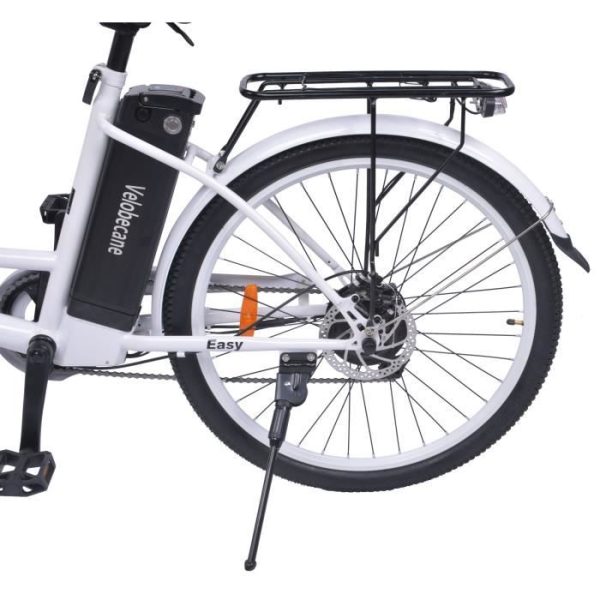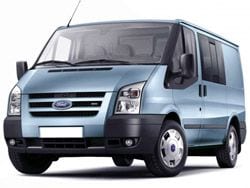
CYCLIST HYDRATION – Velobecane – Electric bike
Content
Hydration is one of the determining factors for cycling. Did you know that losing 2% of your body weight in water can reduce your athletic performance by 20%? Dehydration is often the cause of muscle pain, cramps, tendinitis...hence the importance of drinking regularly! Here are 10 simple and practical tips to help you stay hydrated and inactive.
1. Moisturize regularly
During physical exertion, the body loses water due to heat generated by the muscles, water removed by sweating, and high body temperature when the surrounding air is hot.
Remember to drink water regularly to compensate for these losses. The amount of water to drink depends on climatic conditions, distance and intensity of effort. For fairly intense physical activity in the summer, count on about one 500 ml can per hour.
2. DRINK IN SMALL QUANTITIES.
It is very important to drink in small amounts, from the first revolutions of the wheel to the end of your efforts. Enough one or two sips every 10-15 minutes.
3. DO NOT EXPECT YOUR FEELING THIRST.
When you feel thirsty, you are already dehydrated. Therefore, we should not wait for the body to call for water, but rather anticipate this sensation.
4. DRINK AT ROOM TEMPERATURE.
Prefer drinks at room temperature because water that is too cold causes stomach problems. Hence, your hydration changes.
5. MINERAL WATER: FOR SHORT-TERM EFFORTS
Water is one of the best ways to hydrate, and for efforts under 1 hour, mineral water is sufficient.
6. SWEET WATER AND ISOTONE DRINKS: FOR LONG-TERM EFFORTS
As you train harder and longer, you need carbohydrate and mineral intake to meet your needs.
Sweet water, water with syrup or honey, or isotonic drinks replenish this energy loss and provide maximum hydration. The slightly sweetened water also stays in the stomach longer before entering the small intestine.
7. HIGH HEAT: THINK SALT WATER
When exercising in hot weather, you sweat a lot and lose mineral salts. This loss can be compensated for by drinking slightly salted water or a suitable isotonic drink. Salt accelerates the rate at which water reaches the muscles and also retains water in the body.
8. CONTINUE LISTENING TO YOUR BODY.
At the first sign (feeling thirsty, heaviness in the legs, shortness of breath, muscle pain, etc.), consider drinking. You are dehydrated and this can affect your overall physical condition.
9. DRINK BEFORE TRAINING.
Moisturizing during exercise is very important, but remember to drink before a race or walk! Take 300 ml of mineral water to swallow a little during the 90 minutes preceding your workout. Thus, you expect water loss and make up for the low hydration seen early in the race.
10. RECOVERY = RECOVERY
Physical activity leads to general and muscle fatigue. Recovery requires good rehydration. It is recommended to drink within 15-30 minutes after training to replenish depleted reserves. Isotonic drinks suitable for recovery can be used. Using bicarbonate water is ideal for removing acid waste accumulated during sports.
Why do you need to drink?
You need to drink to compensate for the water loss associated with exercise: the hotter, the more you need to drink!
A normal-sized bicycle-sized container holds half a liter of beverage. At normal temperatures, you need to drink at least one can per hour, in hot weather in the middle of summer, the dose is almost doubled, two cans per hour ...
When you lose water during an effort, your muscle capacity is greatly impaired: the more water you lose, the slower you walk ... It is said that losing 1% of his weight causes you to lose 10% of his physical capacity. ... Thus, a loss of 700 grams for an athlete weighing 70 kg will force him to run at 27 km / h instead of 30: this is a huge impact on performance!
Waiting drink?
You have to be careful not to get dehydrated even before you start going out: drinking alcohol regularly should be part of your daily routine. You can use a pending drink, for example, before a competition. This wait drink should include minerals and vitamins as well as an effort drink.
What to put in the container?
Drinking only water is not a panacea, but a good start. This may be enough, for example, for a short effort of less than an hour.
Personally, I always leave with a can of water and a can of energy drink. There is no need to load a mule and take two cans of energy drinks with you, especially since in hot weather you may need to cool down: for example, spray your neck. And pouring it on with a sweet drink, in my opinion, is not a good idea (...). When going uphill and temperatures above 30 degrees, the body temperature rises significantly due to the heat release associated with the effort. This is a normal reaction to heating of any engine, including the human body. On the other hand, if you don't know how to cool it down, it is guaranteed to heat up and run out of fuel ... even the discomfort that is often seen in triathlon, for example, with athletes who stop walking and staggering!
In these cases of extreme heat, you should not only drink, but also cool off by spraying yourself with a can, but also take in the jet of water offered to you by organizers or spectators on the side of the road during certain sporting events.
How many ?
IF I go out for a walk at 60 to 120 km / s, I often settle for two cans of 500 to 750 ml, in addition, I bought myself a backpack suitable for cycling, attached close to the body and hardly able to withstand the wind. Then I put in this bag either a camel bag with a supply of water from 1 to 120 liters, or just take two other cans and solid supplies, or another raincoat. For long walks or endurance rides over XNUMXkm this is a good solution, the alternative is to stop and find a grocery store to buy a bottle of water or soda for sugar consumption.
Some use fountains, but there are no fountains in the north (…) or even graveyard taps for refueling, provided the water is drinkable.
How often should you drink?
When we say that you have to drink a can per hour, that does not mean that you have to drink a can at one time! You should drink one to three sips every 10-15 minutes. If you are not used to it, use your counter to check the time or turn on your mobile phone alarm at regular intervals, it will bring you good luck so you don't forget. When walking, it will become a reflex to regularly bring the bottle to your mouth to drink.
Energetic drinks
There are energy drinks on sale: Isostar, Overstim, Aptonia (trademark Decathlon). For my part, I opted for Uptonia with lemon, the product is refreshing and suits me perfectly. After walking for a certain amount of time, I feel a real difference in muscle fatigue with and without energy powder in my container. With these additives, contractures or stiffness occur much later or do not appear at all.
Fragrances are different, the compositions are different, I think everyone should try himself in order to find what suits him best. It is easy to find comparators on the network at the composition level, and everyone is free to make their choice, but refusing an energy drink, in my opinion, is a mistake. Finally, you can save money by purchasing a larger sachet package that will serve you anyway during the season ...
Finally, respect the recommended dosages! Doubling the dose is useless and, conversely, can block you due to excessive X or Y inputs, I have no action on the part of the manufacturers, and no matter what people say, the dosages are perfectly thought out and tested ...
Make your own mix?
Make your own drink with sugar, salt, etc., why not, but personally I don't have the time and the experts in this industry are frankly much better than me! we sometimes read this practice on the forums, but to be honest, it's a waste of time or saving money ...
In my opinion, at best, you risk misdosing and end up with an infamous drink, and at worst, have the opposite effect if you increase the dose for certain ingredients too much to cause indigestion or increase muscle restlessness and/or convalescence... Subsequently , for a while a quiet Sunday walk in the mode of a bicycle trip, water or water and a container of syrup may be enough ....
Drink after effort!
Recovery is the foundation of cycling if you want to progress, and drinking helps you recover after every ride.
Good hydration will allow you to remove all the toxins accumulated during training or racing. This will help cleanse your muscles and allow them to get stronger on your next ride.
Finally, good hydration combined with stretching and a proper diet for the next few hours is the winning equation for progress and happiness on the road.
How do you know if you are dehydrated?
At the end of the day, interspersed with a bike ride, you drank before, during, and after doing family or other activities: to see if you are properly rehydrated, look at your urine in the evening if it is clear. and transparent, so perfect that you have everything and you are in good shape for the next walk! Otherwise, you should drink more ...
It may sound trivial, but watch the professionals ballet with cars again during the Tour de France and you will get a little insight into the importance of drinking in this sport ...
